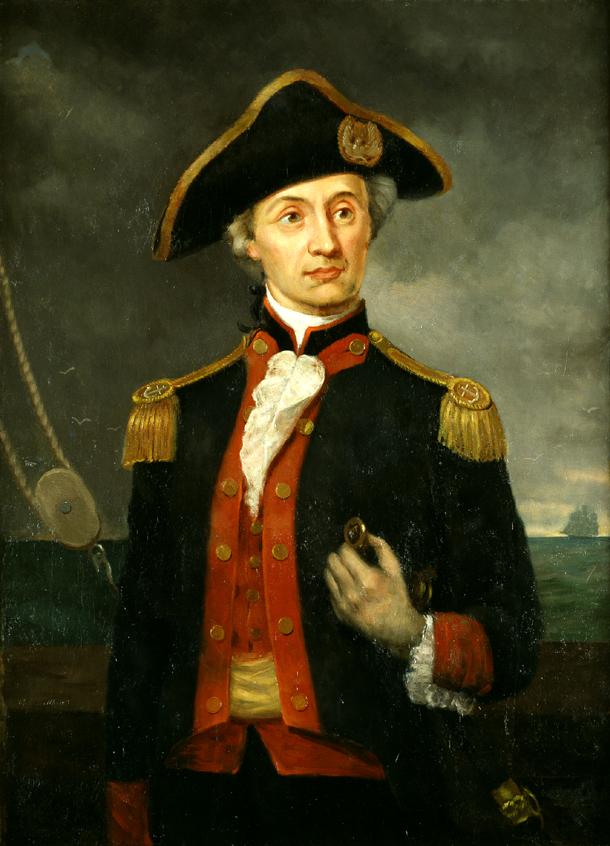
| Title | John Paul Jones |
| Artist/Maker | George
Bagby
Matthews
(
1857
-
1943
)
|
| Date | 1890 ca. |
| Medium | Oil on canvas |
| Dimensions | h. 44 x w. 32 in. (h. 111.8 x w. 81.3 cm) |
| Credit Line | U.S. Senate Collection |
| Accession Number | 31.00012.000 |
George Matthews based this image of naval hero John Paul Jones, painted about 1890, on a portrait by Charles Willson Peale. The older painting is part of the large Peale collection at Independence National Historical Park in Philadelphia. In the painting, Jones wears the French Order of Military Merit, presented to him by Louis XVI in 1780. Peale is thought to have executed his life study around 1781, following Jones’s triumphal return from France.
Born in Virginia, Matthews had studied in Paris with portrait painter Carolus Duran in the 1880s before concentrating his career in and around Washington, D.C. Historian and architect Glenn Brown reported in his documentary volume, The History of the United States Capitol, that the Matthews portrait of Jones was purchased directly from the artist on April 3, 1890. But the Congressional Record shows that discussions about acquisition of the painting took place both earlier and later than that date. The painting was in “the care of the Navy Department” when deliberations began in March; the Senate passed a bill to purchase the portrait in September; and the House followed suit in February 1891.
Fond of historical subjects, Matthews is known for his depictions of Lee and His Generals, The Battle of the Merrimac with the Monitor, and Last of the Wooden Navy. The artist’s many portrait subjects ranged from Abraham Lincoln to Jefferson Davis. Matthews is further represented in the U.S. Senate by a portrait of Patrick Henry.
A Scotsman by birth, seaman John Paul Jones emigrated to the American colonies, moving to Philadelphia at the outset of the American Revolution. With the help of influential friends, he obtained a lieutenant's commission in the Continental navy. A year after his promotion to captain, Jones received from Congress command of the ship Ranger. Sailing to France, he staged daring raids on British vessels and seaports. Jones took command of a French vessel in 1779, renaming it the Bonhomme Richard (Poor Richard), in honor of Benjamin Franklin, who was much beloved by the French. On September 23 of that year, Jones encountered a large British convoy led by two heavily armed ships, the Serapis and the Countess of Scarborough. Although his vessels were the less formidable, the courageous Jones was able to outmaneuver the British and force a surrender in one of the fiercest battles in naval history.
Jones became a popular hero in France following this victory and did not return to Philadelphia until 1781. He next took command of the America, a 74-gun ship of the Continental navy. When the navy disbanded at war's end, Jones served as a collections agent abroad for monies owed to the Americans. In 1787 he was awarded a Gold Medal, the only such honor presented to a naval officer for service during the Revolution. Jones returned to Europe, where he sailed in the service of other nations, though he wrote to Thomas Jefferson that he could "never renounce the glorious title of a citizen of the United States." [1] He later died in France in 1792. The chapel at the U.S. Naval Academy, in Annapolis, Maryland, contains what are believed to be his remains, transferred there in 1905.
1. John Henry Sherburne, Life and Character of the Chevalier John Paul Jones, a Captain in the Navy of the United States, during their Revolutionary War (Washington, D.C.: Wilder & Campbell,
1825), 298.